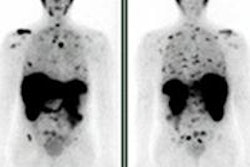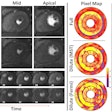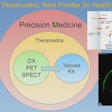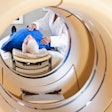Published research isn't sufficiently showing the effectiveness of PET and PET/CT for the surveillance of several cancers, according to a June 17 article in the Journal of Nuclear Medicine. Studies lack standard definitions for surveillance, use different scanning protocols, and have inconsistent reports of test accuracy.
Researchers concluded that studies using multiple PET or PET/CT scans as part of a surveillance protocol for cancer patients were generally lacking in quality. The absence of a common definition for cancer surveillance and not having a "well-thought-out" prospective protocol based on cancer type and cancer stage at last treatment adversely affected results and conclusions.
The analysis was led by Dr. Kamal Patel from the Institute of Clinical Research and Health Policy Studies at Tufts Medical Center. Study co-authors included Dr. Bruce Hillner, chair of the National Oncologic PET Registry (NOPR), and NOPR co-chair Dr. Barry Siegel (JNM, June 17, 2013).
Literature search
Patel and colleagues searched Medline and Cochrane Library databases for 1996 through March 2012 for research studies that used PET or PET/CT to assess and monitor patients with lymphoma, colorectal cancer, or head and neck cancer. Those cancers were chosen because they generated the most studies and included the greatest numbers of patients undergoing post-treatment surveillance.
The search yielded 1,813 citations, from which 146 full-text articles were evaluated. The authors further rejected studies that did not meet their definition of imaging surveillance, which was defined as imaging performed at least six months after treatment completion in patients considered disease-free by clinical examination or other imaging at the time of PET.
Patel and colleagues did, however, collect data from studies that did not meet the inclusion criteria to offer recommendations on how to improve future research. Several studies met most of the inclusion criteria but failed to either adequately report their surveillance protocol or clearly describe the patient population.
The initial sample was culled to 12 papers that met inclusion criteria and provided data on test accuracy. There were six lymphoma studies (two PET, four PET/CT), with a total of 767 patients; two colorectal cancer studies (both PET), with 96 subjects; and four head and neck cancer studies (three PET, one PET/CT), with 194 patients.
Grading papers
Patel and colleagues rated the quality of each of the final 12 studies as A, B, or C, based in part on content and methodology. Studies rated as A followed recognized standards for diagnostic tests and provided clear descriptions of the design, population, test, reference standard, and outcomes. They also had "no major reporting omissions or errors and no obvious source of bias," the authors noted.
Papers in the B category had some deficiencies, but they were not considered likely to result in a major bias. Studies rated as C had serious design or reporting deficiencies. Only one study received an A, eight received a B, and three received a C.
Most studies reported sensitivities and specificities in the range of 90% to 100%, although several studies reported lower results. "The only randomized controlled trial, a colorectal cancer study with 65 patients in the surveillance arm, reported earlier detection of recurrences with PET and suggested improved clinical outcomes," the authors wrote.
Missing standards
In their critique, Patel and colleagues noted there was no standard definition of surveillance across the research studies or within cancer types. The studies also lacked a consistent schedule for repeated scans, they found.
Inconsistencies were evident in the time between the final surveillance PET and the last clinical follow-up exam, which ranged from 2.3 to 31 months. In seven studies, patients were scanned serially, in four studies patients were scanned once, and the frequency was indeterminate in another study, the authors wrote.
"Because of the inconsistent definition of surveillance, the variations in imaging protocols, and the few studies using a particular imaging modality in a given cancer type, we did not conduct a meta-analysis," they wrote. "In addition, the literature was of inferior quality -- seven of 12 studies used a retrospective design and half lacked masked outcome assessments."
"The retrospective studies had an inconsistent or no predefined scanning frequency and interval," they added. "Prospective studies used widely ranged scanning schedules -- from multiple scans every six months to a single scan at roughly two years after treatment completion."
Primary failures
The review highlights the two failures that dominate problems with surveillance using PET and PET/CT, according to Patel and colleagues. One is the lack of a common definition for surveillance, while the other is the lack of a "well-thought-out prospective protocol based on cancer type and stage at last treatment."
"Testing intervals should be tailored to the relative risk of recurrence, which has been shown in each of these cancers to have its own declining pattern with time," they wrote.
In discussing the challenges of conducting their review, Patel and colleagues noted that results were difficult to formulate because of the lack of a standard surveillance definition.
"Studies were generally of poor quality, with more than half being retrospective," they added. "In studies conducting multiple scans as part of a surveillance protocol, we were unable to use all available data because test accuracy was not consistently defined and reporting was incomplete."
Based on the findings, the authors advocate the creation of common definitions of surveillance and surveillance protocols. They suggest that surveillance can generally be defined as the "evaluation of an asymptomatic patient with no clinical evidence of disease to assess for otherwise occult disease."
There is a need for comparative studies of surveillance to evaluate clinically relevant outcomes, they wrote.
"Future high-quality prospective studies, including randomized trials, are necessary to answer the question of what role surveillance scanning should play and for what duration in different cancers," Patel and colleagues concluded.




















